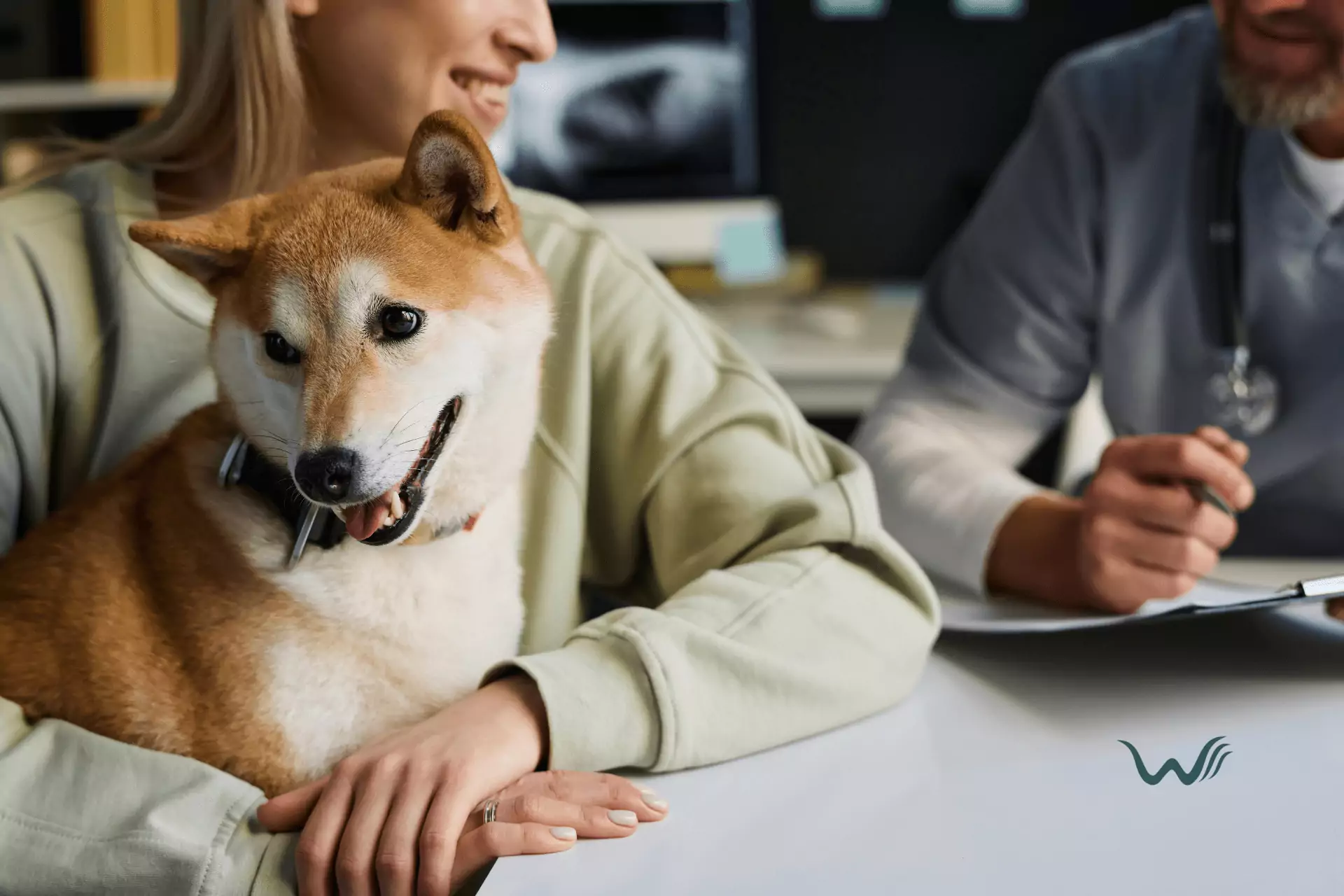

Socializing Your Dog With Emotional Support Animals
by Ayesha Aziz
Last updated: April 20, 2024
Verified and Approved by:
Angela Morris,
MSW, LCSW
Fact Checked

Are you looking for ways to help your dog become more social? Do you have an emotional support animal and want to know how to introduce them to your furry friend? Look no further! In this article, we will explore the benefits of socializing your dog with emotional support animals and provide you with practical tips to make the process a breeze.
Having a social dog not only enhances their overall well-being but also allows them to form meaningful connections with others. Socialization plays a crucial role in your dog’s development, helping them become confident, friendly, and adaptable.
By introducing your dog to emotional support animals, you can provide them with opportunities to learn important social skills and build strong relationships. Whether you are a dog owner who wants to expand your pet’s social circle or you have an emotional support animal that can assist in the process, this article will guide you through the steps to ensure a positive and enriching experience for both you and your furry companion.
So, let’s dive in and discover the incredible benefits of socializing your dog with emotional support animals!
Key Takeaways
- Socializing your dog with emotional support animals enhances their overall well-being and develops their social skills.
- Emotional support animals provide comfort, companionship, and support to individuals with mental or emotional disabilities.
- Socializing with emotional support animals can reduce anxiety and improve your dog’s temperament.
- Successfully socializing your dog with emotional support animals requires patience, understanding, and gradual exposure, as well as utilizing training techniques like desensitization and controlled introductions.
Understanding Emotional Support Animals
So you’ve got your furry friend and you’re ready to introduce them to some emotional support animals, but do you really understand what an emotional support animal is and how they can help?
Emotional support animals, or ESAs, are animals that provide comfort, companionship, and support to individuals with mental or emotional disabilities. They are not the same as service animals, as they don’t require specific training to perform tasks. Instead, their presence alone helps to alleviate symptoms of anxiety, depression, and other emotional conditions.
ESAs can be any type of animal, from dogs and cats to rabbits and birds, and they play a crucial role in improving the mental well-being of their owners.
The benefits of having an emotional support animal are numerous. These animals provide unconditional love and support, which can greatly reduce feelings of loneliness and isolation. They offer a sense of purpose and responsibility, as their owners need to take care of them and provide for their needs. Additionally, the presence of an ESA can help to lower stress levels and regulate emotions, as they provide a calming and soothing effect.
Whether it’s through cuddling, playing, or simply being present, emotional support animals have a unique ability to connect with their owners on a deep emotional level and provide the support they need.
So, if you’re considering socializing your dog with emotional support animals, know that you’re not only benefiting your furry friend but also helping those in need of emotional support.
Read Positive Reinforcement Training For Apartment Dogs: Thriving In Small Spaces.
The Benefits of Socializing Your Dog
One of the advantages of introducing your canine companion to new experiences is the positive impact it can have on their behavior and well-being.
Socializing your dog with emotional support animals can be a great way to provide them with the opportunity to interact with other animals in a controlled and safe environment. This can help them develop better social skills, reduce anxiety, and improve their overall temperament.
When your dog is exposed to different situations and animals, they learn how to navigate through various social interactions. This can help them become more confident and comfortable in different environments. By socializing your dog with emotional support animals, you’re giving them the chance to practice their social skills and learn how to properly interact with others.
Additionally, socializing your dog with emotional support animals can help reduce their anxiety. Interacting with other animals can provide a sense of comfort and companionship, which can help alleviate stress and anxiety. It can also help your dog build trust and develop positive associations with other animals, making them more relaxed and at ease in social situations.
Overall, socializing your dog with emotional support animals can have a significant impact on their behavior and well-being. It can help them become more confident, reduce anxiety, and improve their social skills. So why not allow your furry friend to socialize and thrive in a world full of love and companionship?
Introducing Your Dog to Other Animals
When introducing your pup to new furry friends, it’s important to take things slow and allow them to become familiar with one another. Dogs are social creatures, but they can also be cautious when meeting new animals.
Start by introducing them in a neutral space, like a park or a friend’s backyard, where neither dog feels territorial. Keep the initial meeting short and positive, allowing them to sniff each other and interact in a controlled environment. Observe their body language closely to ensure that both dogs are comfortable and relaxed. If either dog shows signs of stress or aggression, separate them and try again another time.
As the dogs become more comfortable with each other, gradually increase the duration and frequency of their interactions. Plan regular playdates or walks together to help them build a bond. It’s important to supervise their interactions and provide positive reinforcement for good behavior. Reward both dogs with treats and praise when they display friendly and calm behavior towards each other.
Over time, your pup will learn to associate other animals with positive experiences and will become more confident and social. Building these positive relationships with other animals will not only benefit your pup’s social skills but also enhance their overall well-being and happiness.
So go ahead and introduce your dog to new furry friends, and watch them flourish in their social interactions!
Training Techniques for Socialization
Using positive reinforcement techniques and gradual exposure, it’s crucial to expose your furry friend to various environments and interactions to ensure proper socialization. This will help them become comfortable and confident when encountering new situations or meeting other animals.
Here are three training techniques to assist you in socializing your dog:
- Desensitization: Start by exposing your dog to new environments or stimuli in a controlled and positive way. Gradually increase their exposure to different sights, sounds, and smells, making sure to reward them with treats or praise for calm behavior. For example, if your dog is nervous around other dogs, you can start by having them observe other dogs from a distance, then slowly move closer over time. This gradual exposure will help them become familiar with new experiences and reduce anxiety.
- Counter-conditioning: Use positive reinforcement to change your dog’s emotional response to certain stimuli. For instance, if your dog becomes anxious or aggressive when seeing other animals, you can train them to associate the presence of other animals with positive experiences. Whenever your dog sees another animal, give them a treat or engage them in a fun activity. This will help them form positive associations and gradually reduce any negative reactions.
- Controlled introductions: When introducing your dog to other animals, it’s important to do so in a controlled and supervised manner. Start with short, supervised interactions in a neutral environment, such as a park or a friend’s backyard. Allow the dogs to sniff and investigate each other while closely monitoring their behavior. If any signs of aggression or fear arise, separate the dogs and try again later. Gradually increase the duration and complexity of the interactions as your dog becomes more comfortable. Don’t forget to reward positive behavior and provide plenty of praise throughout the process.
By using these training techniques, you can help your dog become well-socialized and comfortable around emotional support animals. With patience and consistency, your furry friends will be able to navigate social situations with ease, making them a great companion for both you and others.
Overcoming Challenges in the Socialization Process
Navigating the socialization process can feel like untangling a knot of emotions and experiences. It can be challenging to introduce your dog to emotional support animals, especially if they’ve had limited social interactions in the past. But don’t worry, you’re not alone in this journey. Many dog owners face similar challenges and with the right approach, you can overcome them.
One common challenge is fear or anxiety. Dogs, just like humans, can feel nervous or scared when meeting new animals. It’s important to approach the socialization process with patience and understanding. Take small steps and gradually expose your dog to emotional support animals in controlled environments.
Start with short and supervised interactions, allowing your dog to become comfortable at their own pace. Reward them with treats and praise for positive behavior, and never force them into situations they’re not ready for.
Another challenge you may encounter is aggression. Some dogs may display aggressive behavior towards emotional support animals, which can make socialization difficult. If your dog shows signs of aggression, it’s crucial to seek professional help from a certified dog trainer or behaviorist. They can help you identify the root cause of the aggression and develop a training plan to address it.
Your dog’s socialization journey is an opportunity for growth and development, and by supporting them through it, you’re also serving others who may benefit from their emotional support.
Frequently Asked Questions
How can emotional support animals benefit individuals with anxiety or depression?
Having an emotional support animal can greatly benefit individuals with anxiety or depression. They provide comfort, companionship, and a sense of purpose. By being there for you unconditionally, they can help alleviate symptoms and improve overall mental well-being.
What are some common signs that indicate a dog is not properly socialized?
Signs of improper socialization in dogs include excessive barking, aggression, fearfulness, and difficulty adjusting to new environments. Imagine a dog who, like a lone wolf, struggles to connect with others due to a lack of social skills.
Are there any specific breeds that are more challenging to socialize than others?
Some breeds, such as the Akita and Chow Chow, can be more challenging to socialize due to their independent nature and natural guarding instincts. However, with patience, consistency, and proper training, any dog can be successfully socialized.
Can emotional support animals help in reducing symptoms of post-traumatic stress disorder (PTSD)?
Yes, emotional support animals can be incredibly helpful in reducing symptoms of PTSD. They provide companionship, comfort, and a sense of security, allowing individuals to feel more at ease and supported during challenging times.
How long does it typically take for a dog to become comfortable around other animals?
It can vary based on the dog’s personality and past experiences, but it typically takes time and patience for a dog to become comfortable around other animals. Each dog is unique, so it’s important to go at their own pace.
Certify Your Emotional Support Animal Today

Why You Can Rely on Us?
At Wellness Wag, we believe your pet deserves care rooted in both science and compassion. Each article is carefully researched, written in clear language for pet owners, and then reviewed by qualified professionals to ensure the information is evidence-based, current, and practical for real-life care. Our goal is to help you feel confident in making informed decisions about your pet’s health and well-being.
Reviewed by
Angela Morris, MSW, LCSW
Angela is a licensed clinical social worker with 20 years of experience in patient advocacy and community mental health. She has assisted numerous clients with ESA evaluations and brings a deep understanding of disability accommodations, ensuring that all information is accurate, supportive, and practical.

Written by :
Ayesha Aziz
Last Updated :
April 20, 2024












